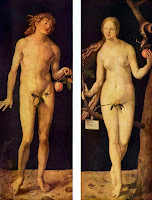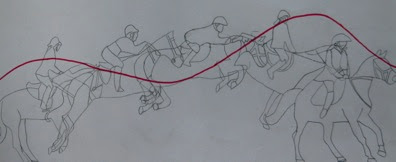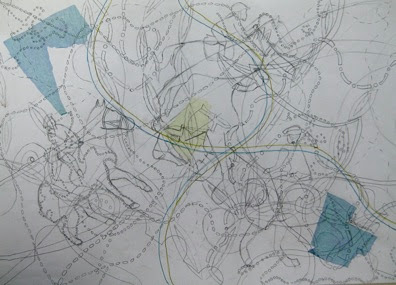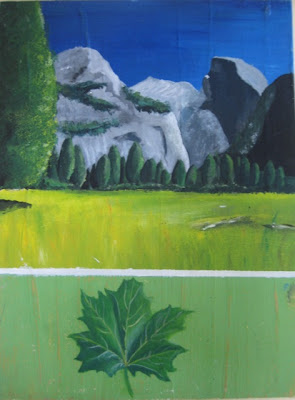Showing posts with label Art. Show all posts
Showing posts with label Art. Show all posts
Thursday, 8 September 2011
Friday, 22 July 2011
Oh, the Places You'll Go....
Knitted Trees installation in Pioneer Square Washington by Suzanne Tidwell, an artist from Sammamish, WA has turned this corner into the setting of a Dr. Seuss book and it looks whimsically enticing!
Burn brightly all you tree huggers out there, Pete
Wednesday, 6 July 2011
Monday, 20 June 2011
Dream-like Day
 |
| Bill Robinson at QUT Gallery |
 His work in particular was exceptional - the works of a master infused with life, colour, humour and personality - all aglow on large canvasses which capture Qld's unique landscapes as well as delicate oils and gouaches taking us into his intimate world of interior settings as we're invited into Bill's homelife. For me, these works were richer than the surreal offerings at GoMA and although I know I was standing in front of some of the great works of Man Ray, Magritte, Giacometti and de Chirico - all personal heroes - Bill's works still left me astounded at what is possible with paint when in the hands of a master.
His work in particular was exceptional - the works of a master infused with life, colour, humour and personality - all aglow on large canvasses which capture Qld's unique landscapes as well as delicate oils and gouaches taking us into his intimate world of interior settings as we're invited into Bill's homelife. For me, these works were richer than the surreal offerings at GoMA and although I know I was standing in front of some of the great works of Man Ray, Magritte, Giacometti and de Chirico - all personal heroes - Bill's works still left me astounded at what is possible with paint when in the hands of a master. |
| Man Ray - Prayer |
 A crisp morning, strong sunlight and a pleasurable day viewing paintings. What better way to spend the day in my house of worship? Not recommended for everyone and there is intensive reading for those who have several hours to spend - it is quite a serious exhibition presenting the development of the Surrealist manifesto and early publications of literature and graphics - but worthwhile to give you a good overview and the opportunity of seeing some great works. I'll be heading back for a second longer look in the next few weeks.
A crisp morning, strong sunlight and a pleasurable day viewing paintings. What better way to spend the day in my house of worship? Not recommended for everyone and there is intensive reading for those who have several hours to spend - it is quite a serious exhibition presenting the development of the Surrealist manifesto and early publications of literature and graphics - but worthwhile to give you a good overview and the opportunity of seeing some great works. I'll be heading back for a second longer look in the next few weeks.Burn brightly, Pete.
Saturday, 18 June 2011
Grunewald
The Isenheim Altarpiece is an altarpiece painted by the German artist Matthias Grünewald in 1506-1515. It is on display at the Unterlinden Museum at Colmar, France.
By far his greatest, as well as his largest work, it was painted for the Monastery of St. Anthony in Isenheim near Colmar, which specialized in hospital work. The Antonine monks of the monastery were noted for their treatment of sufferers of skin disease, such as ergotism, symptoms of which are displayed by figures including the crucified Christ in the altarpiece. Grunewald's work is from the start of the Northern Renaissance and still stands up as a brilliant painting and one of THE great religious artworks.
Designed to be viewed by the patients from everywhere in the small chapel for sufferers of debilitating disease, the centrepiece was seen only when the hinged doors were opened. There are lesser known images, equally as strong and as brilliant in their depictions of the suffering and the triumphant Christ, which make up the other panels/doors to the altarpiece, but it is this image of a suffering and a very humane Christ for which Grunewald is known.
Friday, 17 June 2011
Tremendous Tens
Recent drawing exercises from Year 10 students -
beginning with multiple sport images showing movement and depth in pencil or fineliner pen with a simple single coloured line added to help develop the image; the second busier drawing is about energy and motion with the inclusion of colour with coloured paper collaged on randomly; the final is a drawing still using the initial figures but building on energy and movement, but using other marks. The final darker image is produced in inks with the idea of being a faster and looser drawing about drawing and mark making using what was learnt in previous exercises.
Three different students show their approaches to the problem:
Student 1: Equestrian
Student 2 : Gymnastics
Student 3: Snowboarding
Burn brightly, Pete
More of those Fabulous Nines...
We've been painting with my Year 9s this term.... on wood panels. The girls were asked to choose a landscape and section off the wood panel with the landscape on the top and below, a sanded back section on which they'd paint a small still life relating to the scene. The works are based on the art practice of a contemporary French artist and integrate two very old disciplines - landscape and still life (we just don't tell the girls that's what they're doing). They're not all quite finished yet, but you may be interested in how things are looking. Here's the results of their layered, blended, washed and sanded-back paint so far. Painting stars, all of them burning brightly....
Thursday, 16 June 2011
'Surrealism: The Poetry of Dreams'
GoMA in Brisbane is the exclusive Australian venue for 'Surrealism: The Poetry of Dreams' direct from the Pompidou Centre in Paris. With more than 180 works by 56 artists, including paintings, sculptures, ‘surrealist objects’, films, photographs, drawings and collages you'll see important art works that rarely leave Paris and a comprehensive overview of this important artistic movement.
The exhibition presents a historical overview of Surrealism, its evolution from Dada experiments in painting, photography and film, through to the exploration of the subconscious in the paintings of De Chirico and Ernst, and including readymade objects by Duchamp and Man Ray’s photographs. Also included is a remarkable selection of paintings and sculptures by surrealists Dali, my favorite surrealist Magritte, Miró, Giacometti, Ernst, Magritte-alike Paul Delvaux and the absolutely brilliant Dorothea Tanning.
 From what I hear, there are also extensive writings and documentation of the movement, heaps of surrealist film and works of lesser known but important artists up to the seventies. Well worth the trip across to the cultural precinct on the Brisbane River between now and early October. I'll probably be taking several train loads of students down to GoMA over the next month or two.
From what I hear, there are also extensive writings and documentation of the movement, heaps of surrealist film and works of lesser known but important artists up to the seventies. Well worth the trip across to the cultural precinct on the Brisbane River between now and early October. I'll probably be taking several train loads of students down to GoMA over the next month or two.Burn brightly, Pete
Tuesday, 14 June 2011
Intimacy
 |
| Adam & Eve - Albrecht Durer |
If the first three chapters of the Torah tell us anything, its about our response to being found out, revealing things about ourselves we want hidden from others or our God(s). When we're naked with someone, there's a level of intimacy and familiarity that goes hand in hand with trust... and that can also mean there are things that we don't want seen.
 |
| Reclining Nude - Lucien Freud |
Painter Lucien Freud's nudes are often cited as being too revealing - exposing too much on canvas. Certainly the poses are provocative and genitals are evident/ emphasised. But Freud's work is also about nakedness on another level - intimacy and the trust between model and painter as we the viewers are shifted into that unique intimate space of trust. When you look at a Freud painting, often the models are sleeping - so complete is their trust and sense of security that they feel they can be totally relaxed under the painter's gaze.
I had a friend who modeled nude for the art college I attended in the 80s and we both knew it would happen one day where we would end up in an unusual situation seeing each other in a way we never expected to. When it happened, the awkwardness we expected wasn't there - we had a level of trust between each other that existed over a period of years and allowed us to continue on past what potentially could have been embarrassing.
Recently I wrote about haircuts and the intimacy of that experience and a friend said she knew what I was talking about. Perhaps we're all a little surprised when we expose ourself a little more to a stranger - hoping we won't be laughed at or criticised or judged and rejected. When we're naked with a lover or friends, we're most vulnerable and revealing all with great risks involved. We shouldn't be surprised at awkwardness or hesitancy. So if revelations here are too revealing and I show you too much, I make no apology. I just want a little bit of intimacy... don't we all?
Burn brightly, Pete
Sunday, 29 May 2011
Saturday, 7 May 2011
Take a Trip Away with the Everyday...
 |
| Chair & Fabric 2011 - John Honeywill |
 |
| Eggs & Bowl 2010 - John Honeywill |
Burn brightly, Pete
Subscribe to:
Posts (Atom)



































